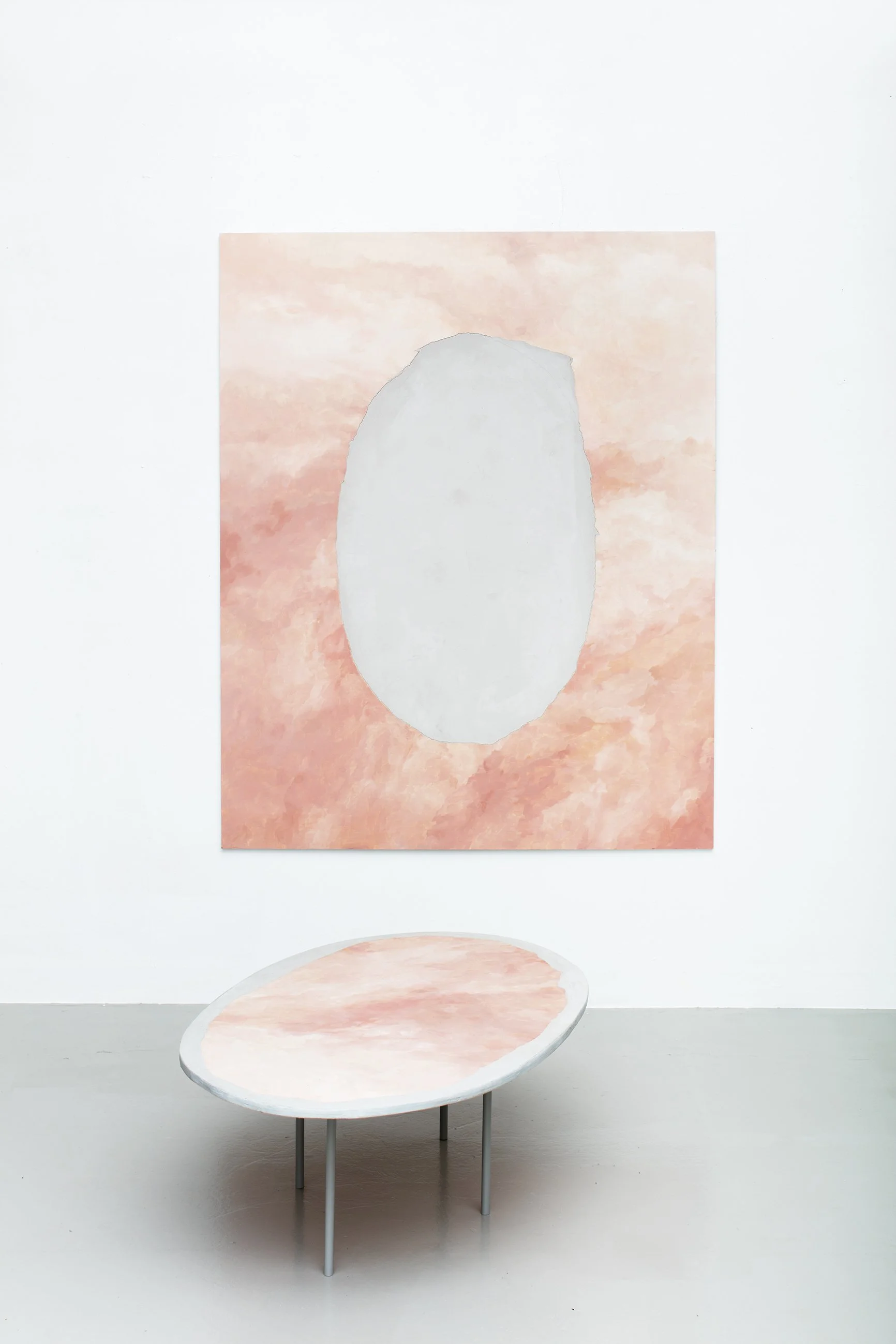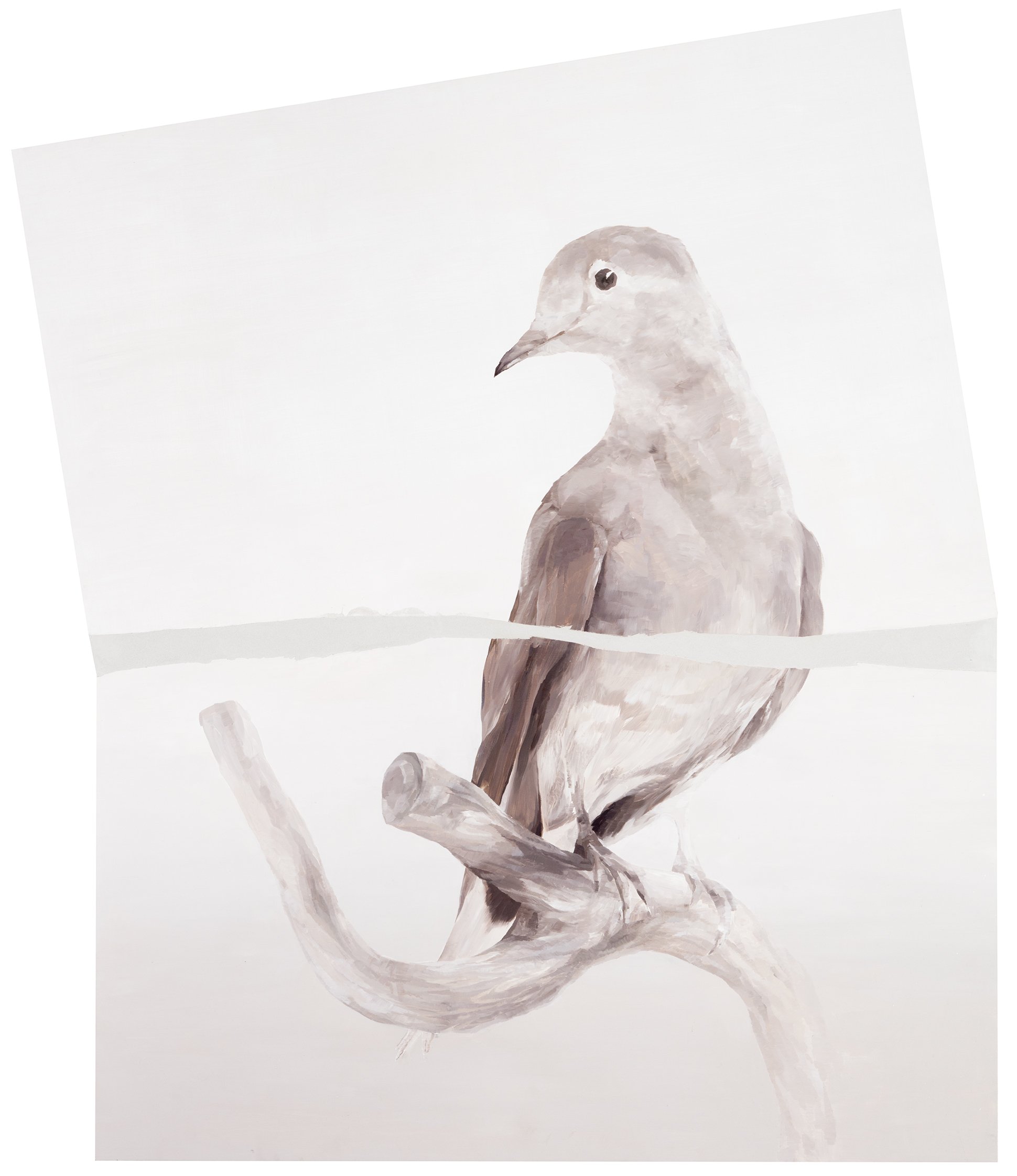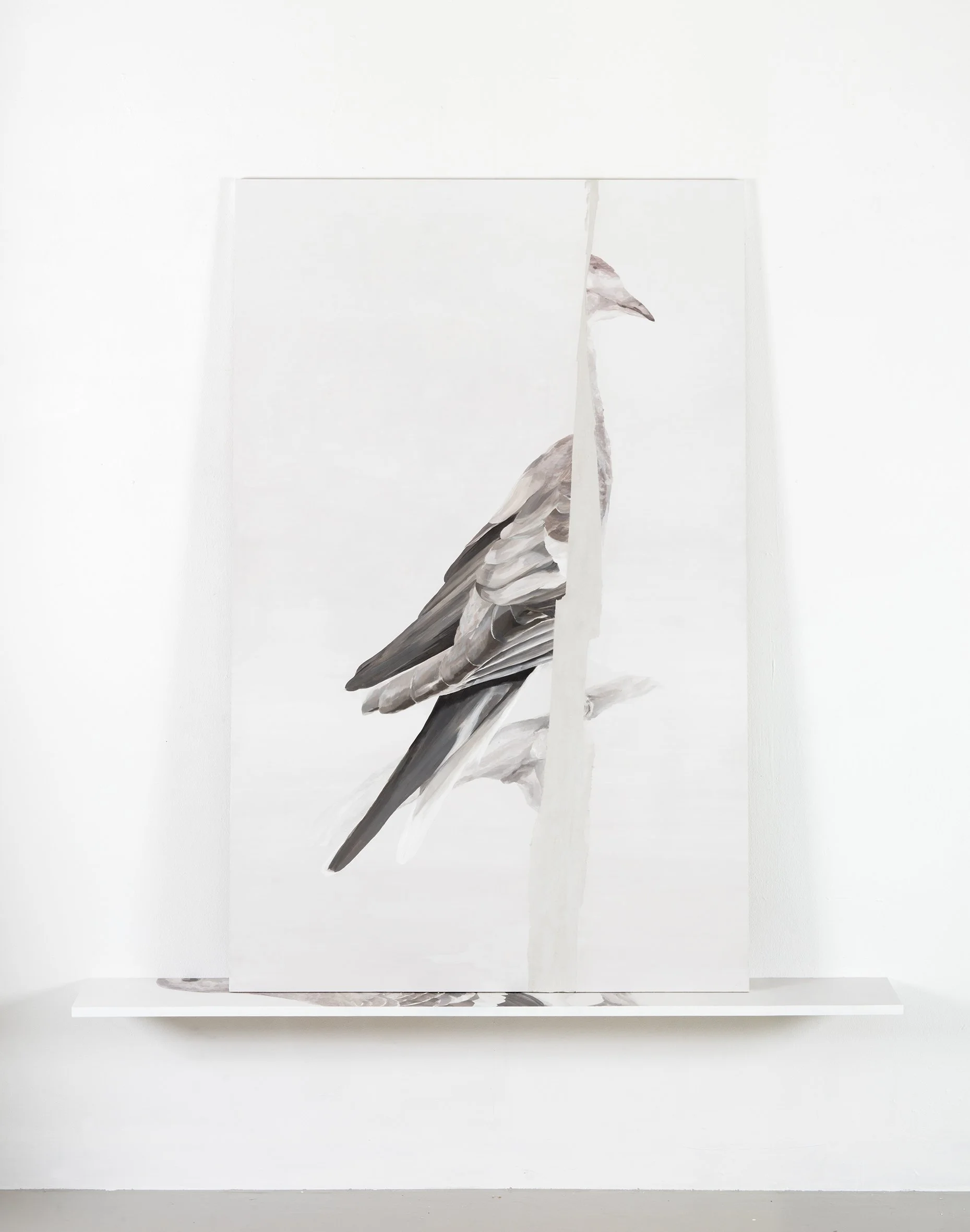Renovation, 2018, Galerie Anhava, Helsinki
Päivi Takala calls her solo exhibition ’renovation’. She has first painted artworks and then gone on to breaking and repairing them. The marks of the repairs are holes patched with filling plaster and interruptions in the paintings.
This exhibition belongs to a continuum of work in which Takala has explored the disintegration and modification of paintings over a long period. In her earlier series of works, she painted illusions of disintegrating images on canvas and then perforated the paintings with three-dimensional objects. Renovation focuses on the gesture of repair. Repairing is a way to study the material nature of the painting and it opens up opportunities to consider in broader perspective the meanings of fixing and patching things. Life can be considered an ongoing struggle with wear, destruction and faults, and the repairs that are to them.
The process of repairing the works in this exhibition is carefully planned and controlled. The paintings did not happen to just undergo damage and then require repairs. The work has been dusty but almost surgical. Takala sawed works in two that she had painted in oils on MDF sheeting and then joined the pieces carefully with filling plaster, but without effacing the marks of repair. She also made holes in the paintings and then repaired them completely with filler. The pieces that were left over were simply moved from the wall and placed horizontally on the floor as continuations of the paintings. By working on her paintings with saws and filling plaster, Takala challenges our notions of the fragility and inviolability of artworks.
The visual motifs of the Renovation series – chequered fabrics, sets of lines and clouds – are distant and emphasise the surface of the paintings. The marks of breaking and repair bring the artist and the activity dimension of the painting close to the viewer. Sawing is a gesture that is comparable to the movements of a brush. This process underscores the physical nature of painting and the artist’s physical presence before her works. It also gives visibility to the simultaneousness of the painted motif and the artefactual nature of the painting.
The Extinction (Martha) paintings, in turn, have narrative subjects. They are based on photographs of the last known passenger pigeon, called Martha. In the early 19th century, the passenger pigeon was the most common bird species in the world, but it was almost hunted to extinction over the course of the century. Martha was protected and kept in a zoo in the early 20th century, although the protection of the last member of a species destroyed by man can be regarded as a desperate act.
Renovation, 2018, Galerie Anhava, Helsinki
Renovation (Sky), 2018, oil color and filler on board, part I: 150x120cm, part II: 36,8x104,5x67,2cm, Heino collection
photo: Jussi Tiainen
Renovation(blue and yellow), 2018, oil color and filler on board, part I :149x132,5 cm, part II: 36,2,x66x66,5cm
photo: Jussi Tiainen
Renovation, 2018, Galerie Anhava
photo: Jussi Tiainen
Extinction I (Martha), 2018, 154x132cm, oil color and filler on board
photo: Jussi Tiainen
Extinction II (Martha), 2018, 151x150x21cm, oil color and filler on board
photo: Jussi Tiainen





